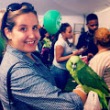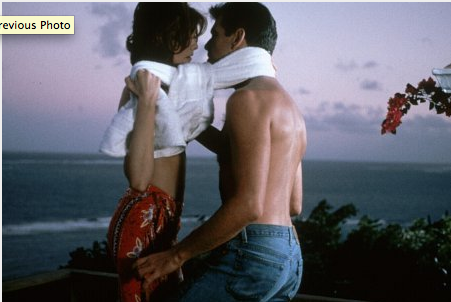
By Shaelyn (@heyshaelyn) Amaio

Credit: Library of Congress, Prints & Photographs Division, Detroit Publishing Company Collection, [LC-D4-70017]
As I stepped off the curb to cross Park Avenue this weekend, I was suddenly, vividly reminded of a Saturday last summer when the city closed the street to motor vehicle traffic and my fellow pedestrians and cyclists hit the pavement. The cool, early September afternoon was very different from that muggy, warm August morning, but walking onto the expansive boulevard jogged my memory of an event I haven’t thought of in months. I have moments like this all over the place. Big and small moments, tucked into corners of the city waiting for me to stumble upon them again.
One of the techniques for memorizing information is creating imaginary buildings where you can store tidbits of information. In your mind, you train yourself to walk inside the front door, turn left, go into a particular room, open a certain cupboard, and, oh! There’s that bit of information you needed to remember. In the case of my experience on Park Avenue, my city functioned as a real-life, physical memory palace, and a stroll was all it took to revisit my past self. As you spend time in a place, memories become stacked in locations you frequent like boxes on shelves, adding depth and complexity to the layers of meaning you’ve created in a place, and the city becomes home. You break it in, like a sturdy pair of shoes, and it belongs to you in a way that is unique and personal.
This doesn’t just happen on a grand, city-wide scale; it can happen with places you vacation, diners you always visit along a highway to your hometown, the airport you always get stuck in going to or fro. And it can happen with museums. Especially those sprawling, traditional museums that have long-term exhibits that you can visit multiple times. For me, it has happened with the Met – no matter how many times I climb those steps, it will probably always remind me of a field trip I took there in eighth grade. I also experience it with Boston’s Isabella Stewart Gardner Museum. Visiting that constant museum is like going to see an old friend who always has your favorite drink on hand. Even though I know I’ll always be able to notice some detail anew there, it’s comforting to be able to go and visit my own memories of the museum, too.
Even as museums make great strides to engage with their publics on social media, or make their collections available online, or create digital walkthroughs of exhibits (all valuable distance and/or community-building engagement strategies), there’s nothing that replaces a first-hand experience of objects in the context of a museum. Much has been said of placing objects in environments that mimic their original contexts, but I’d also like to make a case for the museum context and its ability to link memory to place.
If the first visit to a museum is a gateway, an exciting and overwhelming glimpse of the scope of a museum, the second visit is the one that will really get visitors hooked. The disorientation of the first visit has (hopefully) passed. You know what to expect of the collection, and where to find it (at encyclopedia museums this is less true, but still applies). You know where the bathrooms are. The priority is no longer saying that you SAW THE MUSEUM, but that you deepened your knowledge of — and relationship to — it. The second visit to a museum is, in my view, the richer visit.
The tricky thing is, if someone isn’t already a museum person, they’re probably not going to think they need a second visit. Museums need to encourage and incentivize a second visit. Discounted return visits, membership deals, event calendars and programming can help, as can providing support to help people get to the museum. Teach high schoolers how to take public transit to your museum, give school kids tickets to return with their grown-ups, create serial programs that invite people directly to come back.
Once visitors return, they probably already have some memories stashed in some of your galleries. That eighth grade field trip on the steps of the Met. A first date in the giant heart at the Franklin Institute. A childhood play at a day camp at a local nature museum. A visit to a museum is a sensory experience — it’s easy to create strong memories in that context. People like to reflect on themselves and their experiences as much as they do on interesting objects. It helps them feel a personal connection and become invested in a place. Help visitors build their own memory palaces in your museum. When they bring friends, they’ll share the stories that they’re reminded of when they see the objects they’ve seen before, and their friends will have a new connection to the museum, too.
Museum professionals are often deeply invested in a collection, in the objects it contains, the value they hold, and the stories they tell – and rightly so. Objects make it into museum collections because they’re important, interesting pieces. For someone without deep knowledge of the field, though, the social – and, yes, nostalgic – reasons for visiting can be just as important as the educational ones. Those social visits inevitably include some learning on the side, which also gets stored away in the museum memory palace, to be unlocked again on the next visit. On that eighth grade field trip to the Met, I didn’t just etch those steps into my memory. That trip was also the first time I learned about the 19th century graffiti on the Temple of Dendur. More recently, I experienced the Temple lit on a Friday night, an image that also comes to mind when I enter the space, even during the day. All of these moments, and the conversations I’ve had with others about them, are part of the memory palace I’ve built within the walls of the Metropolitan Museum of Art. The more I visit, the more memories I have, the more invested I am in my experiences there, and the more I am inspired to learn about the collection. And every in-person visit I make to a physical museum helps to enrich my experience of the collection on each subsequent visit.




